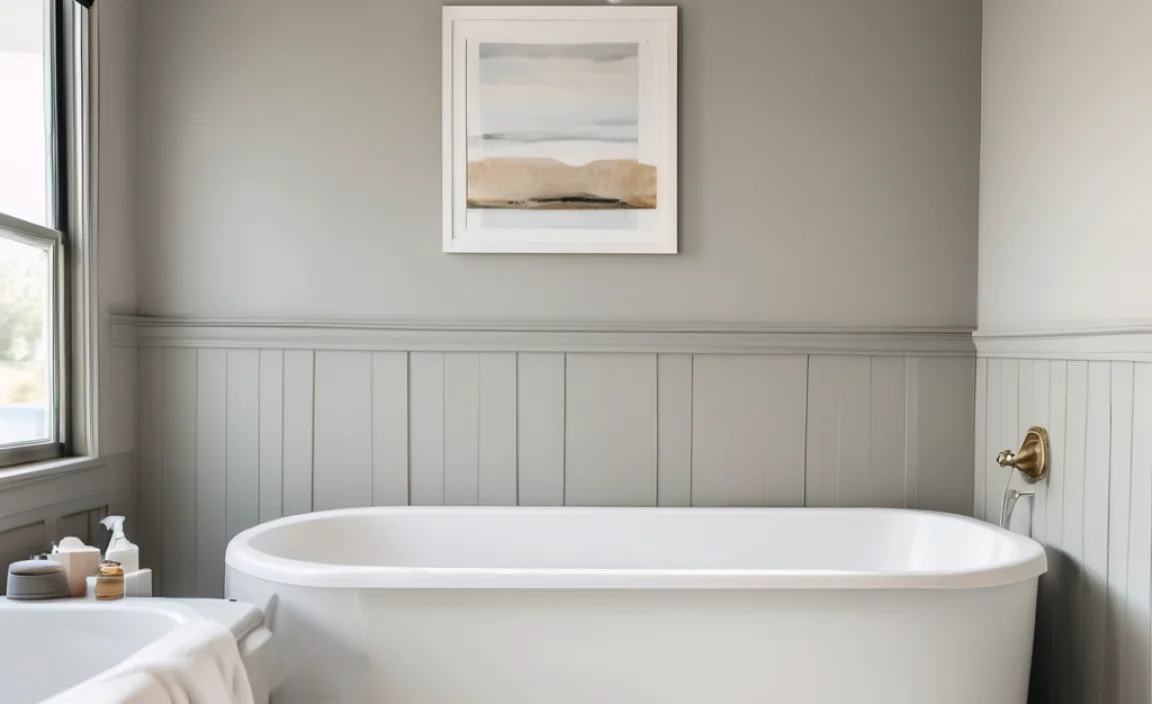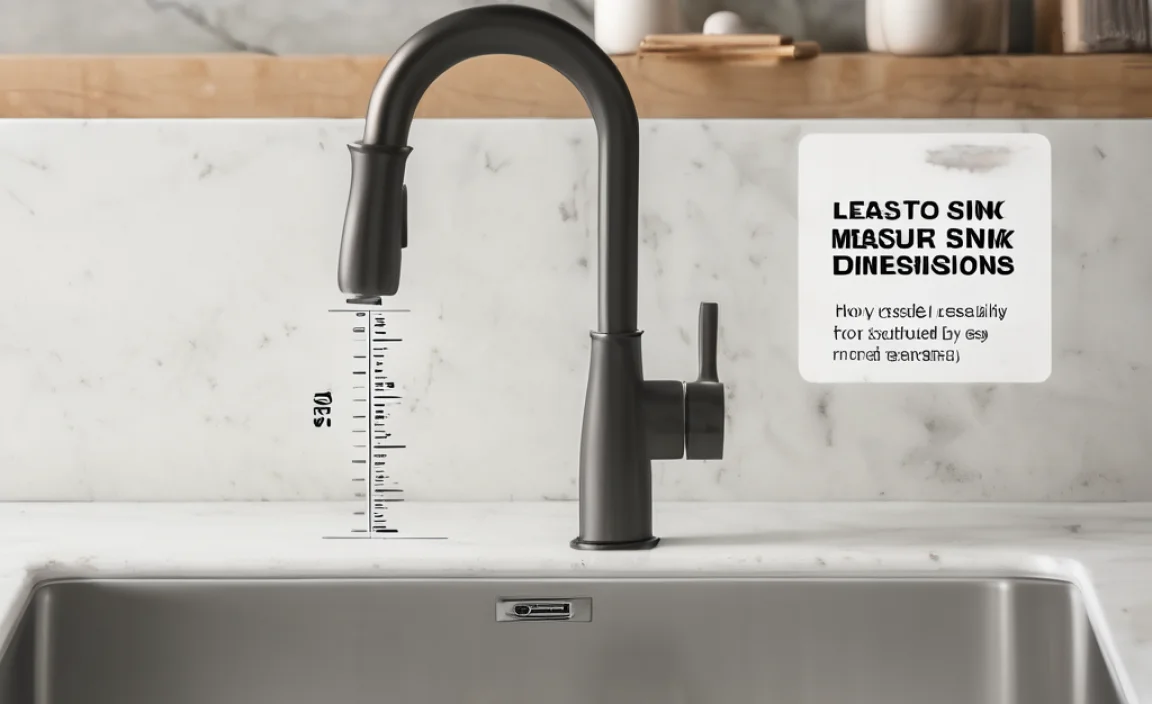Have you ever heard funny noises in your bathroom? Does your toilet bubble sometimes? It can happen when the washer drains. This might seem strange. Why would the washer and toilet be connected? Let’s find out why this happens. We will also see what you can do about it.
Sometimes, when the washer drains, the toilet bubbles. This can be a sign of a problem. The problem is usually in your drain pipes. Don’t worry, we will learn how to fix it.
Key Takeaways
- A bubbling toilet when the washer drains usually means a clogged vent pipe.
- You can try to clear the clog yourself with a plumber’s snake.
- A blocked drain can cause slow draining and gurgling sounds.
- Regular plumbing maintenance prevents these issues from occurring.
- If unsure, call a plumber to check your plumbing system.
Why Toilet Bubbles When Washer Drains
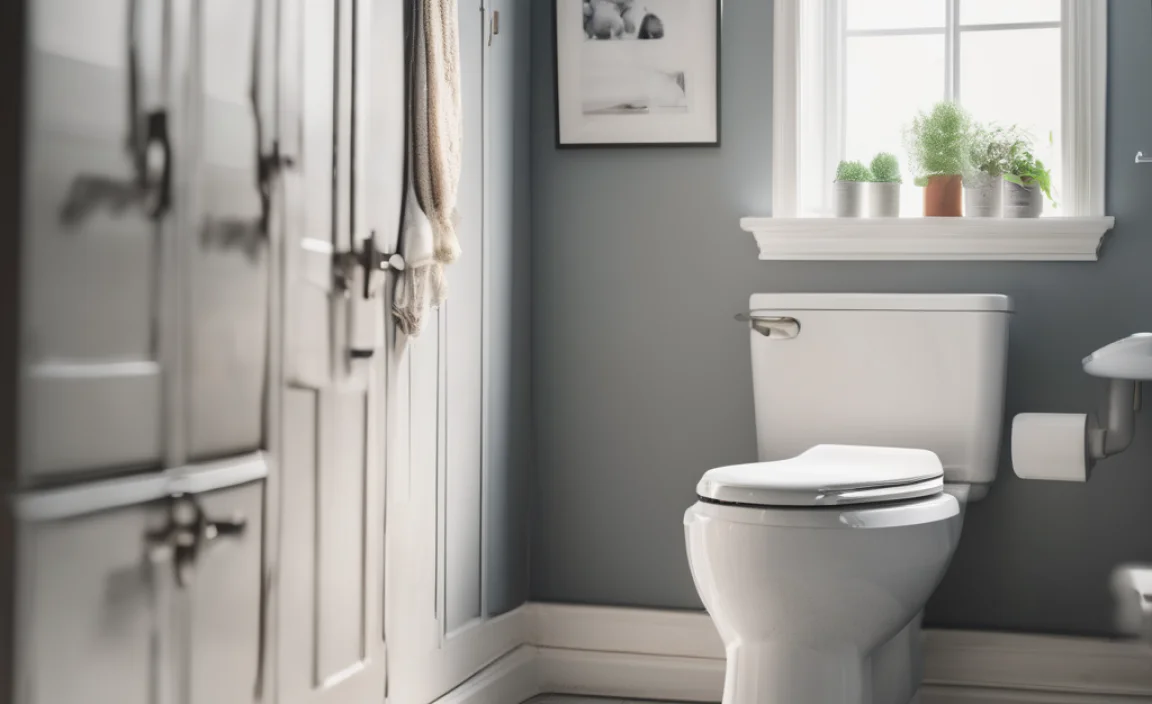
Have you ever wondered why your toilet bubbles when the washing machine drains? It’s usually because of a plumbing problem. The most common problem is a partial clog. This clog is often in your main drain line. When the washer pushes out water, it needs somewhere to go. If the drain is blocked, the water pushes air. This air then goes up through the toilet. This makes the toilet bubble. It’s like when you try to drink from a straw with a hole. Air gets in the way.
- A clogged drain is a common cause.
- The washing machine sends lots of water at once.
- Air needs to escape the drain pipes.
- The toilet is often the easiest escape route for air.
- This causes the bubbling sound.
Imagine your plumbing system as a series of tubes. These tubes are connected to each other. They carry water away from your house. When everything is working right, water flows smoothly. But, if there’s a blockage, things change. Water can’t flow as easily. This creates pressure in the pipes. This pressure can force air up through the toilet. That’s why you see bubbles. Understanding this helps you know what to do next. It’s always best to check your plumbing regularly. This helps prevent major problems.
Is it a serious plumbing problem?
Is a bubbling toilet a sign of a big problem? It might be. It depends on how often it happens. If it only happens when the washer drains, it might be a small clog. But, if it happens all the time, it could be worse. It might mean you have a serious blockage. This blockage could be further down the drain line. It’s important to pay attention to how often it happens. Also, listen to any other strange noises. Slow draining sinks or tubs can also be a sign.
How do I know if it’s a clog?
How can you tell if the toilet bubbling is from a clog? First, check other drains in your house. Are they draining slowly? Do you hear gurgling sounds? These are signs of a possible clog. Also, think about what you’ve been flushing. Things like too much toilet paper can cause clogs. Even things that say they are flushable can cause problems. If you suspect a clog, you can try to fix it yourself. But, if you’re not sure, call a plumber. They have special tools to find and clear clogs.
What happens if I ignore it?
What if you ignore the bubbling toilet? Ignoring it can lead to bigger problems. The clog can get worse over time. This can cause your drains to back up. Backed up drains can cause water damage in your house. This can be very expensive to fix. It’s much better to deal with the problem early. Even if it seems small, it’s worth checking out. Regular plumbing maintenance can save you money in the long run. It can also prevent a lot of stress and mess.
Fun Fact or Stat: Did you know that the average household uses about 400 gallons of water per day? A small leak or clog can waste a lot of water over time!
Washer Draining Causes Toilet to Bubble
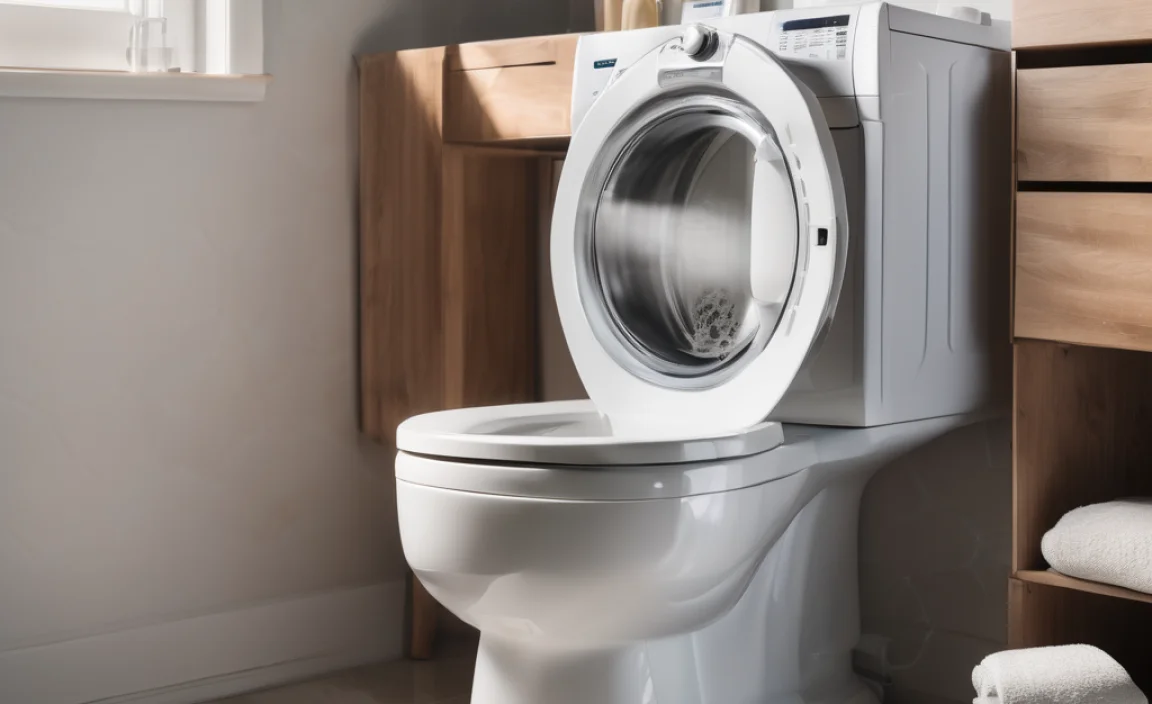
Why does the washer draining cause the toilet to bubble? The washing machine pumps out a lot of water quickly. This sudden rush of water can overwhelm your drain system. If there’s a partial blockage, the water has trouble flowing. This creates pressure in the pipes. The pressure pushes air through the system. The air looks for the easiest way to escape. That’s often the toilet. This causes the bubbles you see. It’s like when you blow air into a bottle of water. The air bubbles up to the surface.
- The washing machine releases a lot of water quickly.
- This sudden rush can overwhelm the drain system.
- A partial blockage makes it harder for water to flow.
- Pressure builds up in the pipes.
- Air escapes through the toilet, causing bubbles.
- It’s similar to blowing air into a bottle of water.
Think of your drain pipes like a highway. When there’s no traffic, cars flow smoothly. But, if there’s an accident, traffic slows down. This creates a backup. The same thing happens in your drain pipes. A clog is like the accident. It slows down the flow of water. This causes a backup and pressure. The pressure needs to go somewhere, so it pushes air. This air then makes your toilet bubble. Understanding this analogy can help you visualize the problem.
How does the drain system work?
How does the drain system in your house work? It’s a network of pipes that carry wastewater away. These pipes are connected to your sinks, toilets, and appliances. There’s also a vent system. Vent pipes allow air to enter the drain system. This helps water flow smoothly. Without vents, the water would create a vacuum. This vacuum would slow down the draining process. The vent pipes usually go up to the roof of your house. They let air in and bad smells out.
What is a plumbing vent?
What exactly is a plumbing vent? A plumbing vent is a pipe that allows air into your drain system. This air helps water flow smoothly. Without vents, the water would create a vacuum. This vacuum would slow down the draining. Vents also let bad smells escape. These smells come from the sewer. Vent pipes usually go up to the roof. Sometimes, these vents can get blocked. Leaves, bird nests, or even snow can cause blockages. A blocked vent can cause the toilet to bubble when the washer drains.
Why is the toilet the first place I see bubbles?
Why is the toilet often the first place you see bubbles? The toilet is connected to the main drain line. It also has a large opening filled with water. This makes it an easy place for air to escape. When the washer drains and creates pressure, the air goes to the toilet. The air bubbles up through the water. Other drains might also be affected. But, the toilet is usually the most obvious place to see the problem. That’s why you notice it when the washer drains and the toilet bubbles.
Fun Fact or Stat: The first flushing toilet was invented in 1596 by Sir John Harington for Queen Elizabeth I!
Fixing Bubbling Toilet When Washer Drains
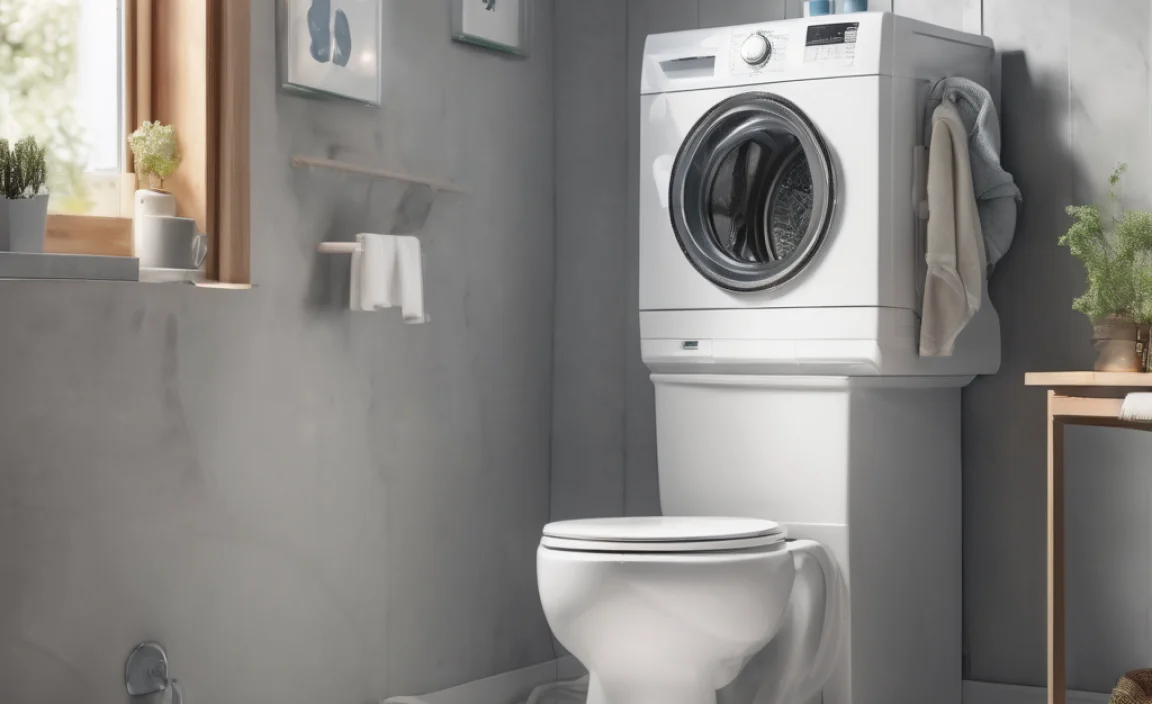
How do you fix a bubbling toilet when the washer drains? The first step is to identify the cause. Is it a simple clog? Or is it a blocked vent? If it’s a simple clog, you can try using a plunger. A plunger can often dislodge minor blockages. If that doesn’t work, you can try a plumber’s snake. A plumber’s snake is a flexible tool that can reach further down the drain. If it’s a blocked vent, you might need to go up on your roof. But, be very careful! If you’re not comfortable with heights, call a professional.
- First, identify the cause of the bubbling.
- Try using a plunger to clear simple clogs.
- Use a plumber’s snake for deeper blockages.
- Check the vent pipe on the roof for obstructions.
- Be careful when working on the roof.
- Consider calling a professional for difficult problems.
Imagine you’re a detective trying to solve a mystery. The mystery is why your toilet is bubbling. You need to gather clues. Check other drains in your house. Listen for gurgling sounds. Think about what you’ve been flushing. Once you have enough clues, you can start to solve the problem. Sometimes, it’s a simple fix. Other times, it might need a professional. But, with a little detective work, you can solve the mystery.
How do I use a plunger?
How do you use a plunger to fix a bubbling toilet? First, make sure there’s enough water in the toilet bowl. The plunger needs to be submerged in water to work properly. Place the plunger over the drain opening. Push and pull the plunger up and down with force. Do this several times. Then, remove the plunger and see if the water drains. If it doesn’t, repeat the process. Sometimes, it takes a few tries to clear the clog. Be patient and keep trying.
What is a plumber’s snake?
What is a plumber’s snake and how do you use it? A plumber’s snake is a flexible tool used to clear clogs. It’s a long, metal cable with a spiral tip. You insert the snake into the drain. Then, you twist and push it through the clog. The spiral tip helps break up the blockage. Once you feel the clog break, pull the snake out. Be sure to clean the snake after each use. You can buy a plumber’s snake at most hardware stores.
How do I check the vent pipe?
How do you check the vent pipe on your roof? First, be very careful! Working on a roof can be dangerous. Use a sturdy ladder and have someone spot you. Once on the roof, find the vent pipes. They are usually sticking up a few inches. Look for any obstructions, like leaves or bird nests. You can try to remove the blockage with your hands or a tool. If you can’t reach it or are uncomfortable, call a professional. Your safety is the most important thing.
Fun Fact or Stat: Plumbers use about 1,000 different tools to do their jobs effectively!
Preventing Toilet Bubbles From Washer
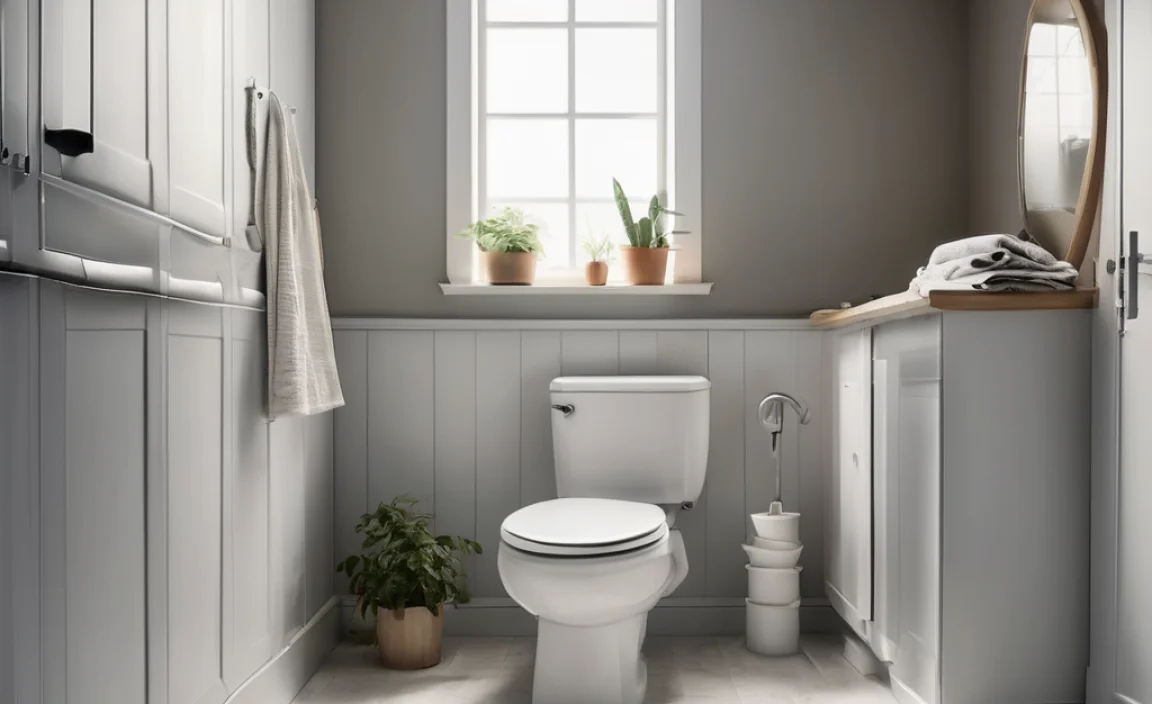
How can you prevent the toilet from bubbling when the washer drains? Regular plumbing maintenance is key. Avoid flushing anything other than toilet paper. Don’t flush things like wipes or cotton balls. These items can cause clogs. Also, be careful not to pour grease down the drain. Grease can harden and create blockages. Run water while using the garbage disposal. This helps flush food scraps down the drain. Consider using drain cleaners regularly, but follow the instructions carefully.
- Avoid flushing anything other than toilet paper.
- Don’t pour grease down the drain.
- Run water while using the garbage disposal.
- Use drain cleaners regularly (follow instructions).
- Schedule regular plumbing inspections.
- Install a lint trap on your washing machine drain hose.
Think of your plumbing system like a car. To keep your car running smoothly, you need to do regular maintenance. You need to change the oil, check the tires, and fill up the gas. The same is true for your plumbing. Regular maintenance can prevent problems before they start. This can save you money and stress in the long run. A little bit of prevention can go a long way.
What should I not flush?
What things should you never flush down the toilet? Never flush wipes, even if they say they are flushable. They don’t break down like toilet paper. They can cause major clogs. Also, don’t flush cotton balls, paper towels, or feminine hygiene products. These items can also cause blockages. Only flush toilet paper and human waste. This will help keep your drains clear. It will also prevent the toilet from bubbling when the washer drains.
How do I dispose of grease?
How should you properly dispose of grease? Never pour grease down the drain. When grease cools, it hardens. This can create a sticky mess in your pipes. Instead, pour grease into a container. Let it cool and harden. Then, throw the container in the trash. You can also wipe greasy pans with a paper towel before washing them. This will help prevent grease from going down the drain. Disposing of grease properly protects your plumbing.
Should I use drain cleaners?
Should you use drain cleaners to prevent clogs? Drain cleaners can be helpful, but use them carefully. Follow the instructions on the label. Some drain cleaners are very harsh. They can damage your pipes if used incorrectly. Consider using enzyme-based drain cleaners. These are gentler on your pipes. They use natural enzymes to break down organic matter. Regular use of drain cleaners can help prevent clogs. This can stop the toilet from bubbling when the washer drains.
Fun Fact or Stat: The average person flushes the toilet about 5 times a day!
Toilet Bubbling and Other Plumbing Issues

Can a bubbling toilet be related to other plumbing issues? Yes, it can. A bubbling toilet is often a sign of a bigger problem. It could mean you have a clog in your main drain line. This clog could also affect other drains in your house. You might notice slow draining sinks or tubs. You might also hear gurgling sounds in other drains. These are all signs that there’s a problem in your plumbing system. It’s important to address these issues quickly.
- A bubbling toilet can indicate larger plumbing problems.
- Slow draining sinks and tubs can be related.
- Gurgling sounds in other drains are a warning sign.
- A clogged main drain line can cause multiple issues.
- Ignoring these problems can lead to bigger damage.
Imagine your plumbing system as a tree. The main drain line is like the trunk of the tree. All the other drains are like branches. If the trunk is blocked, it affects all the branches. The same is true for your plumbing. A clog in the main drain line can affect all the other drains. That’s why it’s important to address the problem quickly. A small problem can quickly turn into a big one.
What are common signs of plumbing problems?
What are some common signs of plumbing problems? Slow draining sinks and tubs are a common sign. Gurgling sounds in drains are another sign. A bubbling toilet is also a warning sign. Low water pressure can also indicate a problem. Leaky faucets or pipes are also signs of trouble. If you notice any of these signs, it’s important to investigate. Ignoring them can lead to bigger problems down the road.
Can tree roots cause plumbing problems?
Can tree roots cause plumbing problems? Yes, they can. Tree roots are attracted to water. They can grow into your sewer pipes. This can cause major blockages. Tree roots can crush or break your pipes. This can lead to expensive repairs. If you have trees near your sewer line, be extra careful. You can use root killer products to prevent problems. You can also have a plumber inspect your sewer line regularly.
How often should I have my plumbing inspected?
How often should you have your plumbing inspected? It’s a good idea to have your plumbing inspected every two years. This can help catch problems early. A plumber can check for leaks, clogs, and other issues. Regular inspections can prevent major problems. They can also save you money in the long run. If you live in an older house, you might need more frequent inspections. Older pipes are more prone to problems.
Here is a table showing common plumbing problems and their solutions:
| Problem | Possible Cause | Possible Solution |
|---|---|---|
| Toilet Bubbling | Clogged drain or vent | Plunge, snake, or check vent |
| Slow Draining Sink | Hair or food blockage | Plunge, snake, or drain cleaner |
| Leaky Faucet | Worn out washer | Replace the washer |
| Low Water Pressure | Mineral buildup in pipes | Call a plumber to clean pipes |
| Running Toilet | Faulty flapper valve | Replace the flapper valve |
Fun Fact or Stat: The Empire State Building has over 70 miles of pipes!
When to Call a Plumber for Toilet Bubbles
When should you call a plumber for a bubbling toilet? If you’ve tried the simple fixes and nothing works, it’s time to call a professional. If the problem is happening frequently, it’s also a good idea to call a plumber. A plumber has special tools and knowledge. They can diagnose the problem accurately. They can also fix it properly. Don’t hesitate to call a plumber if you’re unsure. It’s better to be safe than sorry.
- Call a plumber if simple fixes don’t work.
- Call if the bubbling happens often.
- Plumbers have special tools and knowledge.
- They can diagnose the problem accurately.
- It’s better to be safe than sorry.
- Don’t hesitate to call a professional.
Imagine you’re a doctor. You can treat simple problems yourself. But, if you have a serious illness, you need a specialist. A plumber is like a specialist for your plumbing. They have the expertise to handle complex problems. If you’re not sure what’s causing the toilet to bubble, call a plumber. They can help you get your plumbing back in order.
What tools do plumbers use?
What kind of tools do plumbers use? Plumbers use a variety of tools. They use plungers, snakes, and wrenches. They also use specialized equipment. This equipment includes video cameras for inspecting pipes. They also use hydro jetters to blast away blockages. Plumbers have the right tools for any job. They know how to use them safely and effectively.
How can a plumber diagnose the problem?
How can a plumber diagnose the problem causing the toilet bubbles? A plumber can use several methods. They can inspect your drains with a video camera. This allows them to see inside the pipes. They can also perform a pressure test. This test checks for leaks. A plumber can also talk to you about your plumbing habits. This helps them understand the problem better. With their expertise, they can find the cause of the bubbling toilet.
How much does a plumber cost?
How much does it cost to hire a plumber? The cost of a plumber varies. It depends on the problem and the plumber’s rates. Some plumbers charge by the hour. Others charge a flat fee for the job. Get a quote from several plumbers before hiring one. Be sure to ask about their experience and qualifications. A good plumber is worth the investment.
Fun Fact or Stat: The world’s longest plumbing system is over 4,000 miles long!
Summary
When the washer drains, the toilet bubbles. This is often due to a clog or vent issue. The washing machine pushes a lot of water. This water can cause pressure in the pipes. The pressure then forces air up through the toilet. This causes the bubbling. You can try to fix it yourself. Use a plunger or plumber’s snake. Check the vent pipe on the roof. But, if you’re not comfortable, call a plumber. Regular maintenance can prevent these problems. Avoid flushing anything other than toilet paper. Be careful with grease. A little prevention can save you money.
Conclusion
A bubbling toilet can be annoying. It can also be a sign of a plumbing problem. Understanding why it happens is important. You can try simple fixes yourself. But, don’t hesitate to call a plumber. Regular maintenance can prevent problems. So, pay attention to your plumbing. Take care of your pipes. This will prevent the toilet from bubbling when the washer drains.
Frequently Asked Questions
Question No 1: Why does my toilet bubble only when the washer drains?
Answer: Your toilet bubbles when the washer drains because the washing machine pumps out a large volume of water quickly. This sudden surge of water can overwhelm your drain system, especially if there’s a partial clog. The water pressure increases, forcing air through the pipes. The toilet is often the easiest escape route for this air, leading to the bubbling you observe. This usually indicates a problem with your drain or vent system that needs attention.
Question No 2: What are the most common causes of a bubbling toilet?
Answer: The most common causes include a partial or complete clog in the main drain line. This blockage restricts water flow, causing pressure to build up. Another cause is a blocked plumbing vent. Vent pipes allow air to enter the drain system, ensuring smooth water flow. If the vent is blocked, it can create a vacuum effect, causing the toilet to bubble when the washer drains or when other fixtures are used. Tree root intrusion into sewer pipes is another culprit.
Question No 3: How can I tell if my plumbing vent is blocked?
Answer: Signs of a blocked plumbing vent include slow draining sinks, gurgling sounds in drains, and a bubbling toilet, especially when the washer drains. You might also notice unpleasant odors coming from your drains. To check the vent, visually inspect the vent pipe on your roof for any obstructions like leaves, bird nests, or snow. Be careful when working on the roof and consider calling a professional if you’re uncomfortable with heights.
Question No 4: Can I fix a bubbling toilet myself, or do I need a plumber?
Answer: You can try to fix a bubbling toilet yourself if the problem seems minor. Use a plunger to clear simple clogs in the toilet bowl. A plumber’s snake can help dislodge deeper blockages in the drainpipe. If the problem persists or if you suspect a blocked vent or more serious issue, it’s best to call a plumber. Plumbers have specialized tools and expertise to diagnose and fix complex plumbing problems safely and effectively.
Question No 5: What should I do if my toilet bubbles after using drain cleaner?
Answer: If your toilet bubbles after using drain cleaner, it could mean the cleaner hasn’t fully cleared the clog or has created a new one. Ensure the area is well-ventilated. Avoid using multiple drain cleaners together, as this can create dangerous chemical reactions. If the bubbling persists, call a plumber. The drain cleaner may have damaged your pipes, or the clog may be too severe for DIY solutions. A plumber can assess the situation and recommend the best course of action.
Question No 6: How can I prevent my toilet from bubbling in the future?
Answer: To prevent your toilet from bubbling in the future, practice good plumbing habits. Avoid flushing anything other than toilet paper and human waste. Don’t pour grease down the drain. Run water while using the garbage disposal to flush food scraps. Use drain cleaners sparingly and follow the instructions carefully. Schedule regular plumbing inspections to catch potential problems early. Consider installing a lint trap on your washing machine drain hose to prevent lint from clogging the pipes. This will help prevent the issue of when the washer drains, the toilet bubbles.


